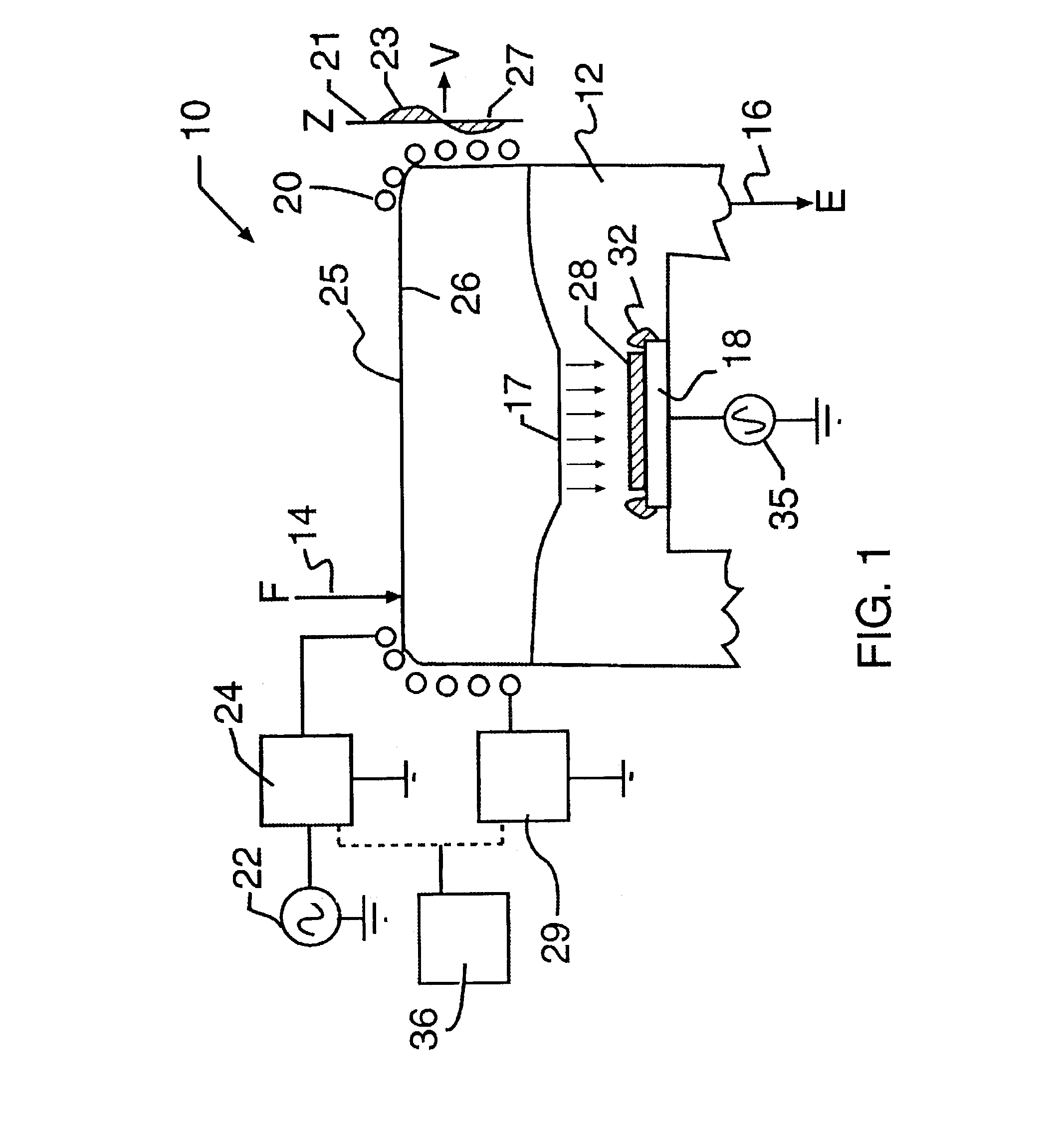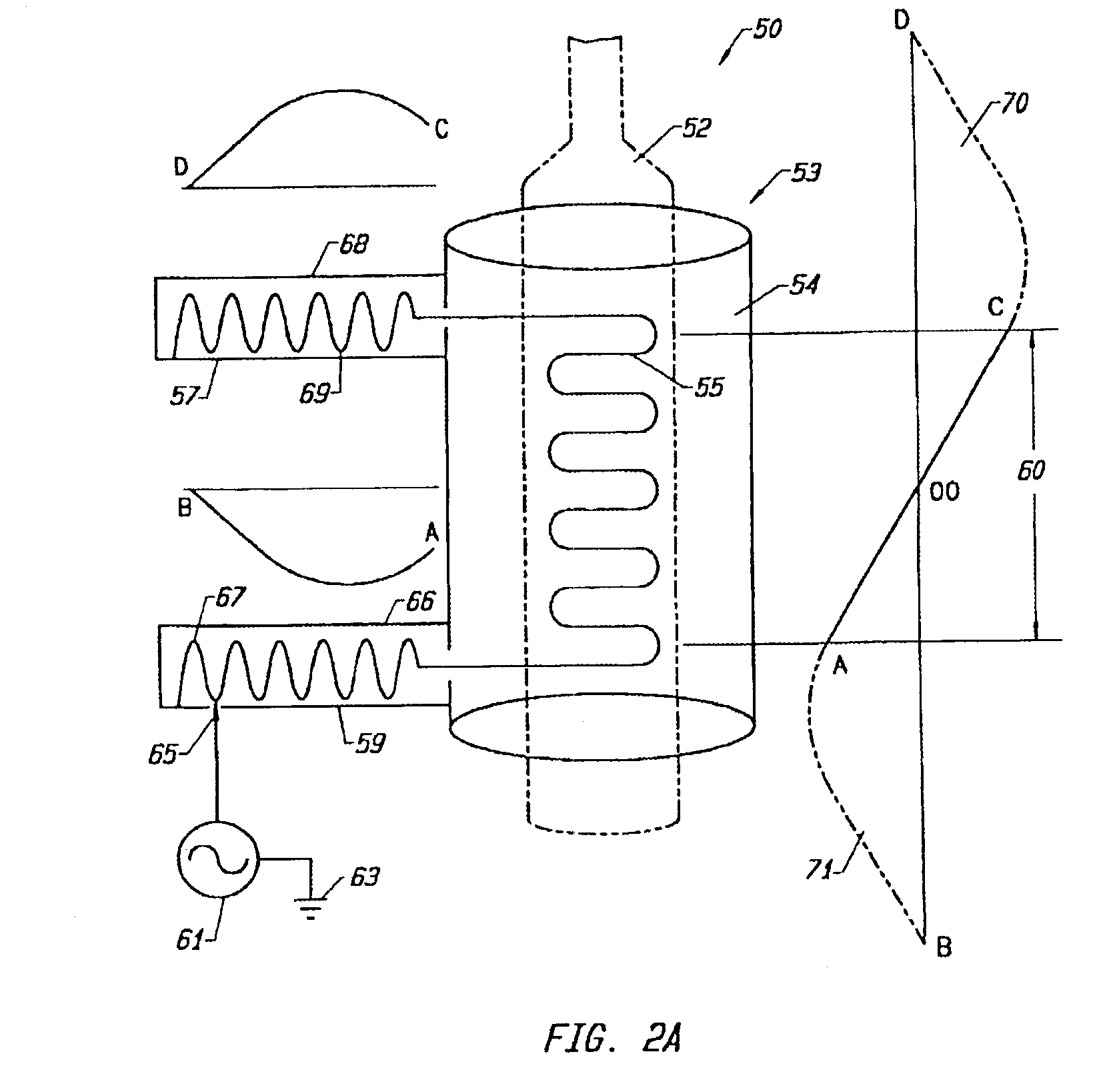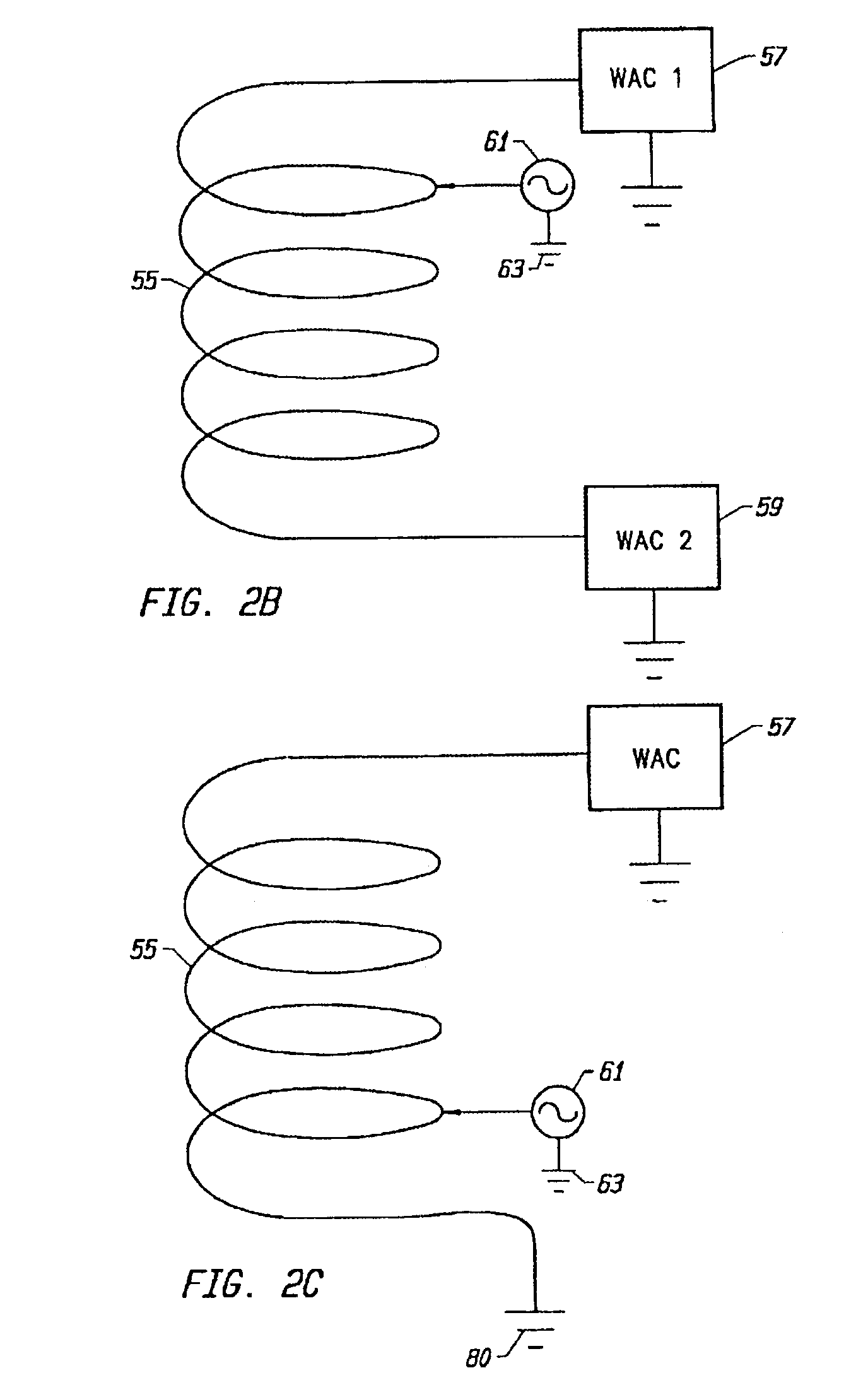Multi-temperature processing
- Summary
- Abstract
- Description
- Claims
- Application Information
AI Technical Summary
Benefits of technology
Problems solved by technology
Method used
Image
Examples
Embodiment Construction
[0023]FIG. 1 is a simplified diagram of a plasma etch apparatus 10 according to the present invention. This etch apparatus is provided with an inductive applicator, e.g., inductive coil. This etch apparatus depicted, however, is merely an illustration, and should not limit the scope of the claims as defined herein. One of ordinary skilled in the art may implement the present invention with other treatment chambers and the like.
[0024]The etch apparatus includes a chamber 12, a feed source 14, an exhaust 16, a product support check or pedestal 18, an inductive applicator 20, a radio frequency (“rf”) power source 22 to the inductive applicator 20, wave adjustment circuits 24, 29 (WACs), a radio frequency power source 35 to the pedestal 18, a controller 36, an agile temperature control means 19 , and other elements. Optionally, the etch apparatus includes a gas distributor 17.
[0025]The chamber 12 can be any suitable chamber capable of housing a product 28, such as a wafer to be etched, ...
PUM
| Property | Measurement | Unit |
|---|---|---|
| Temperature | aaaaa | aaaaa |
| Temperature | aaaaa | aaaaa |
| Temperature | aaaaa | aaaaa |
Abstract
Description
Claims
Application Information
 Login to View More
Login to View More - R&D
- Intellectual Property
- Life Sciences
- Materials
- Tech Scout
- Unparalleled Data Quality
- Higher Quality Content
- 60% Fewer Hallucinations
Browse by: Latest US Patents, China's latest patents, Technical Efficacy Thesaurus, Application Domain, Technology Topic, Popular Technical Reports.
© 2025 PatSnap. All rights reserved.Legal|Privacy policy|Modern Slavery Act Transparency Statement|Sitemap|About US| Contact US: help@patsnap.com



